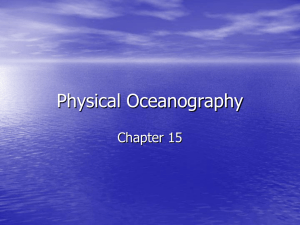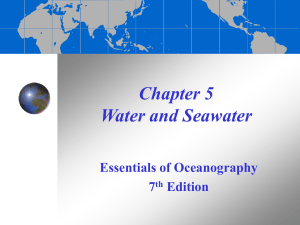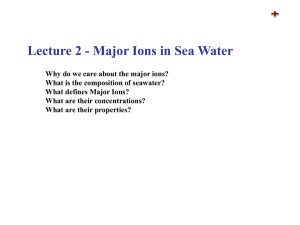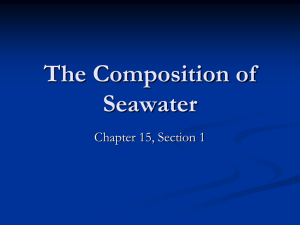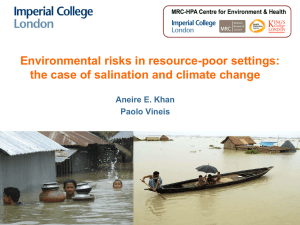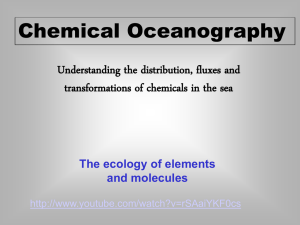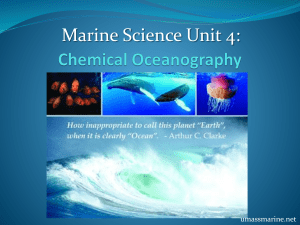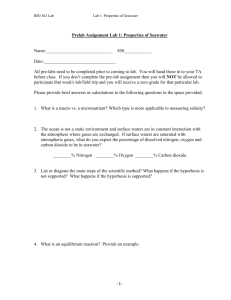Salinity of Seawater and Freezing Point Depression
advertisement
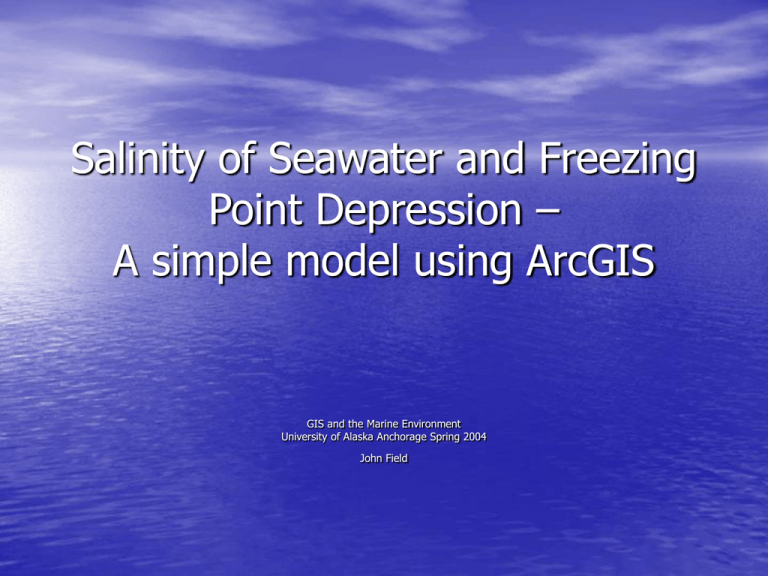
Salinity of Seawater and Freezing Point Depression – A simple model using ArcGIS GIS and the Marine Environment University of Alaska Anchorage Spring 2004 John Field Study Area John Field GIS 333 - Seawater and Salinity Arctic Ocean Conditions • Looking at surface water in the polar Arctic Ocean, the Bering Sea and Gulf of Alaska • Arctic Ocean has freshwater influx from large river systems • Low salinity: 30-32ppt* vs 35ppt average for world’s oceans * ppt - parts per thousand John Field GIS 333 - Seawater and Salinity Satellite image of Sea Ice http://www.arcticice.org/seaice.htm Barrow Sea Ice Cam John Field GIS 333 - Seawater and Salinity Sea ice concentration for May, average 1978-1992 Schweitzer, Peter N., 1995, Monthly average polar sea-ice concentration: USGS Digital Data Series DDS-27, USGS Reston, Virginia. John Field GIS 333 - Seawater and Salinity Terminology • Degree Day – A measure of the departure of the mean daily temperature form a given standard: one degree day for each degree (C or F) of departure above or below the standard for one day. • Freezing Degree Day (FDD) – Days average temp is below freezing, adjusted to -1.8°C for sea water • Freezing Point Depression (FPD) – The amount of temperature in degrees (C or F) below the normal freezing point of a solution (for ex. water and salt). www.wikipedia.org John Field GIS 333 - Seawater and Salinity A method to calculate Freezing Point Depression (FPD) based on Salinity? Chemistry approach base on Molarity, conversions of ppt to molar concentration. There must be some existing models out there… Tip #1: Don’t know where to look? http://www.usna.edu/Oceanography/courses/ google it. ;-) SO426_maksym/text/chapter3_iceformation.htm John Field GIS 333 - Seawater and Salinity Tf –T0 = mC Because of the presence of salts in seawater, the equilibrium freezing point is depressed below that of fresh water. It turns out that for temperatures above -8.2 °C, the freezing point of sea ice, Tf, can be approximated as a linear function of C concentration. Tf –T0 = mC where m, a constant, is the slope of the solidus-liquidus line, and T0 is 0 °C. In other words, the temperature at the ice/water interface is fixed by the interfacial solute concentration. This means that for seawater at 35 ppt, typical of the Antarctic, the freezing point is about -1.9 °C. In the Arctic it is -1.8 °C. John Field GIS 333 - Seawater and Salinity Tf – T0 = mC • Domain for the model -8.2°C – 8.2°C (17.2-46.7F) • C is the salinity in ppt • m is the calculated slope Calculate m aka slope with built in Excel function SLOPE Calculated field in Excel FPD_sal: The freezing point depression due to salinity John Field GIS 333 - Seawater and Salinity Checking slope First result for slope -0.046672593 Recalculate slope using only two known points from the graph (0,0) (24.69, -1.33) Which results in m = -0.05386 John Field GIS 333 - Seawater and Salinity Map of seawater salinity John Field GIS 333 - Seawater and Salinity Freezing Point Depression and Salinity John Field GIS 333 - Seawater and Salinity



